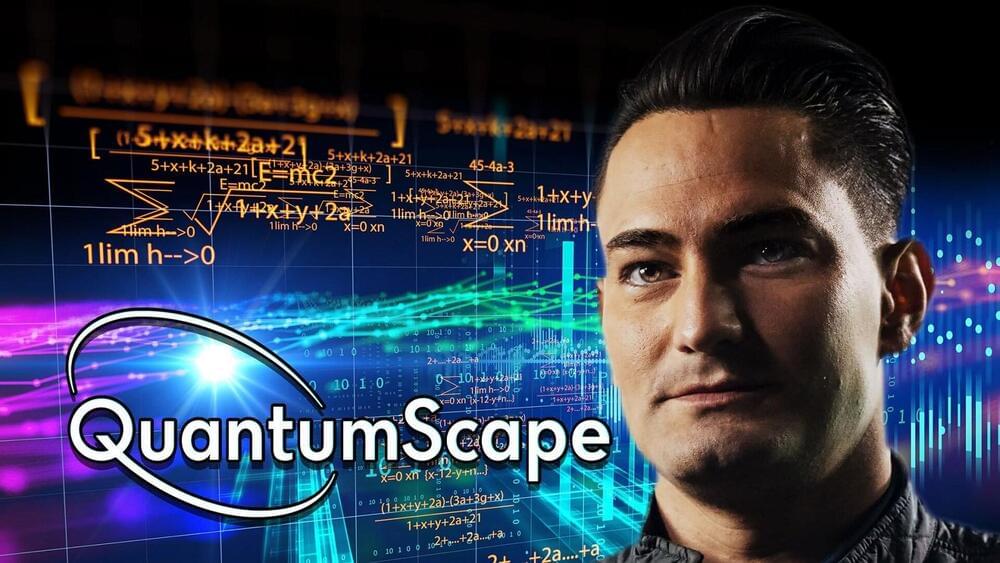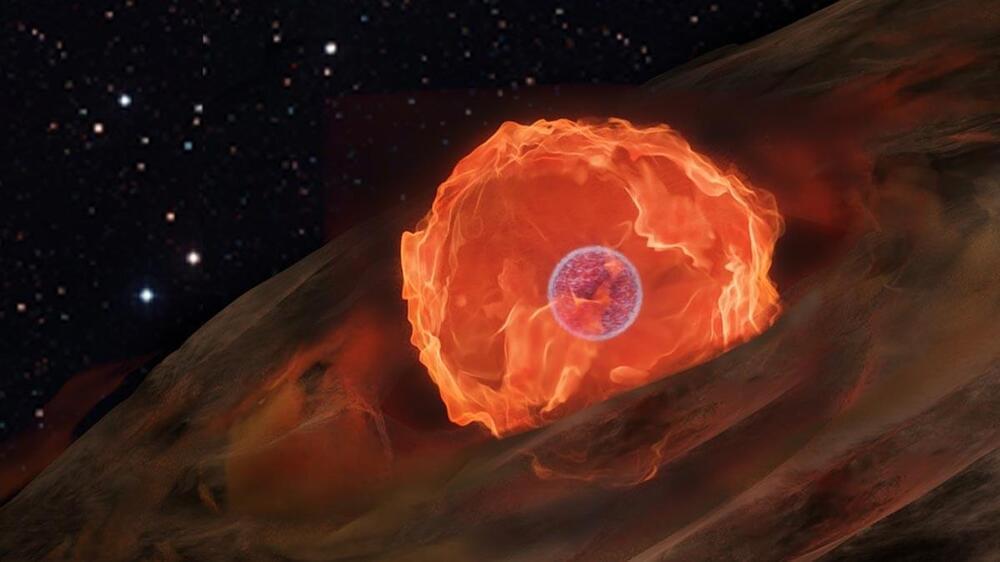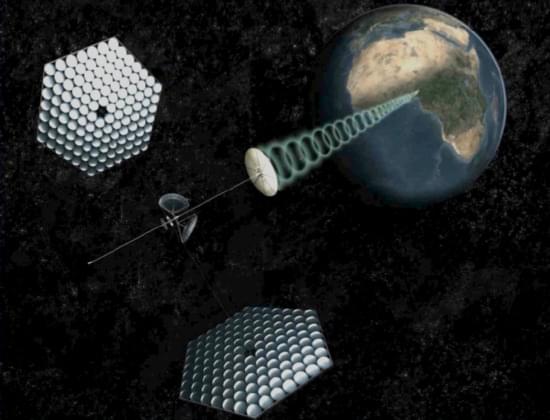Page 4843
May 15, 2022
Forever Battery: QuantumScape’s Holy Grail of Energy
Posted by Quinn Sena in categories: computing, mobile phones, quantum physics, sustainability
A “forever battery” is much smaller and more energy-dense than lithium-ion. They’ll change the world and unlock a trillion-dollar revolution.
In this week’s episode, Aaron and I discuss what could be the “holy grail” of energy: the solid-state — or forever battery. Obviously, lithium-ion cells are the status quo of today. And they power pretty much everything, like your smartphone, laptop and electric vehicle.
Continue reading “Forever Battery: QuantumScape’s Holy Grail of Energy” »
May 15, 2022
Eating Sea Squirts May Reverse the Signs of Aging
Posted by Quinn Sena in categories: biotech/medical, life extension
Summary: Supplementing a diet with Ascidiacea, or sea squirts, reversed some of the main signs of aging in mouse models.
Source: Xi’an jiaotong-Liverpool University.
If you have ever looked in the mirror and seen graying hair and wrinkles or forgotten the name of a close friend, you’d be forgiven for wishing for a pill that could slow or even reverse the effects of aging.
May 15, 2022
Asteroid mining: Helping to meet Earth’s natural resource demands
Posted by Dan Kummer in category: space
With Earth’s natural resources running out, people are looking to mineral-rich asteroids to meet demand.
May 15, 2022
Explosion on a White Dwarf Star Observed for the Very First Time
Posted by Quinn Sena in categories: energy, physics
When stars like our Sun run out of fuel, they contract to form white dwarfs. Such dead stars can sometimes flare back to life in a super-hot explosion and produce a fireball of X-ray radiation. A research team from several German institutes including Tübingen University and led by Friedrich-Alexander-Universität Erlangen-Nürnberg (FAU) has now observed such an explosion of X-ray light for the very first time.
“It was to some extent a fortunate coincidence, really,” explains Ole König from the Astronomical Institute at FAU in the Dr. Karl Remeis observatory in Bamberg, who has published an article about this observation in the reputable journal Nature, together with Prof. Dr. Jörn Wilms and a research team from the Max Planck Institute for Extraterrestrial Physics, the University of Tübingen, the Universitat Politécnica de Catalunya in Barcelona, and the Leibniz Institute for Astrophysics Potsdam. “These X-ray flashes last only a few hours and are almost impossible to predict, but the observational instrument must be pointed directly at the explosion at exactly the right time,” explains the astrophysicist.
“These so-called novae do happen all the time but detecting them during the very first moments when most of the X-ray emission is produced is really hard.” —
May 15, 2022
Gene Editing a “Factory Reset” for the Brain To Cure Anxiety and Excessive Drinking
Posted by Quinn Sena in categories: bioengineering, biotech/medical, genetics, health, neuroscience
Gene editing reverses brain genetic reprogramming caused by adolescent binge drinking.
Gene editing may be a potential treatment for anxiety and alcohol use disorder in adults who were exposed to binge drinking in their adolescence, according to the findings of an animal study published on May 4, 2022, in the journal Science Advances.
The study was issued by researchers from the University of Illinois Chicago (UIC) who have been studying the effects of early-life binge drinking on health later in life.
May 15, 2022
A breakthrough method uses solar energy to produce green hydrogen from water
Posted by Quinn Sena in categories: solar power, sustainability
Scientists have proposed a solar energy-driven photocatalytic method to split water. This method uses iridium as a metal catalyst and is believed to be capable of producing green and clean hydrogen fuel on a large scale.
May 15, 2022
Physicists Say There May Be Another Reality Right Beyond This One
Posted by Quinn Sena in categories: materials, physics
For those of us worried the world somehow got trapped in the wrong timeline, relax — scientists are now saying there might actually be two realities.
Two researchers from the University of Maryland released their findings in a study earlier this month in the journal Physical Review Research. According to a university press release, though, a second reality isn’t exactly what they set out to find. While studying layers of graphene, made with hexagons of carbon, the found repeating patterns that changed the way electricity moves.
Based on their research, the pair think they accidentally found a clue that could explain some of our current reality’s mysteries. According to the university’s media arm, they realized that experiments on the electrical properties of stacked sheets of graphene produced results that looked like little universes and that the underlying causes could apply to other areas of physics. In stacks of graphene, electricity changes behavior when two sheets interact, so the two hypothesize that unique physics could similarly emerge from interacting layers elsewhere—perhaps across the entire universe.
May 15, 2022
Is Solar Energy from Outer Space in Our Future? — Part One: Building a Geosynchronous Solar Power Plant
Posted by Len Rosen in categories: satellites, solar power, sustainability
Today a state-of-the-art solar panel on Earth can convert between 20 to 30% of the energy it collects from sunlight into electricity. At night solar panels here contribute nothing. But in space with nothing to block the Sun, that same Earth-based solar panel becomes thirteen times more efficient. And that is enough of an incentive to consider solar power from space.
The Chinese and UK models are massive arrays located in geosynchronous orbit while continuously beaming energy to receiving stations here on Earth.
The US model is different using a constellation of solar power generating satellites. These would be in relatively low orbits and interconnected to form a mesh network. The total network would generate continuous energy beaming it to the surface even when a portion of it gets blocked when the satellites enter the night side of the planet.
May 15, 2022
Machine Intelligence — A conversation with Robert J. Sawyer, the award winning sci-fi author
Posted by Ron Friedman in categories: ethics, robotics/AI

Machine intelligence and artificial intelligence. How it may impact the future of humanity — A discussion with award winning science fiction author Robert J. Sawyer.
The exponential growth in computing powers, machine intelligence and artificial intelligence suggests that within a few decades intelligent machines will have more capability than us. How will they interact with humanity and what are the risks?

















